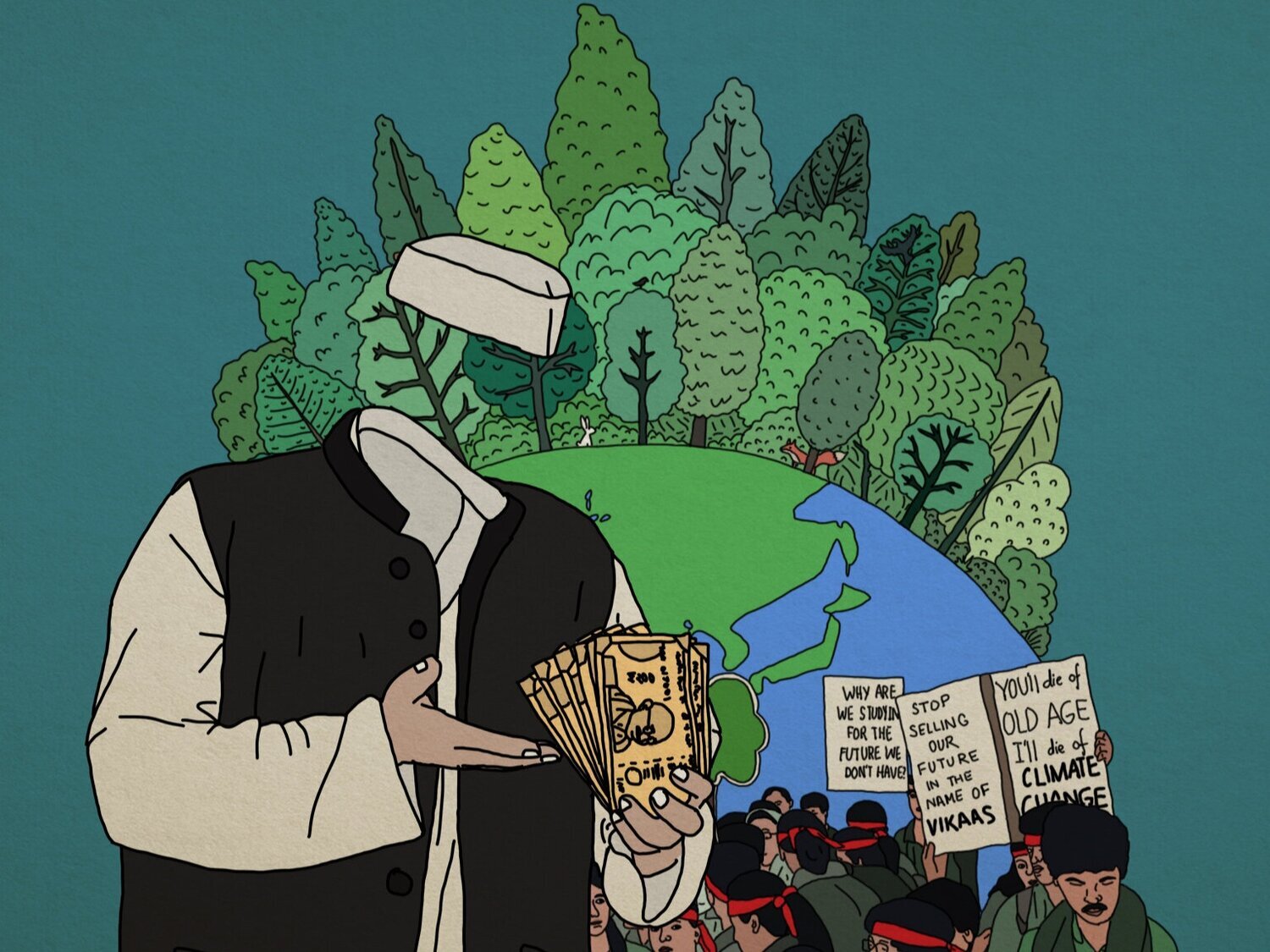Issue IV: Climate Crisis in South Asia
Editor’s Note.
Numerous reports have documented South Asia’s unique vulnerability to the global climate crisis, as a region historically reliant on a monsoon cycle and rivers, and where one-fourth of the world’s population faces sharply declining access to clean air, food, and water. While climate policy features high on the agenda of multiple South Asian governments, there has been little progress on the ground, and deals with global capital for big “development” continue unabated.
Our intention in this issue is not just to sound alarm at the disastrous impact of the climate crisis on life, land, labour, and livelihoods in South Asia. Instead, we seek to illuminate the structural underpinnings of this crisis -- the logic of the capitalist order built on unbridled commodification of nature, the obsession with economic growth, and extreme social inequality. Moreover, rather than pinning our hopes on the (inevitably limited) climate policies of capitalist governments, we seek inspiration from the efforts of ordinary people, social movements, and leftist and eco-socialist organizations that are mobilizing for climate justice and environmental protection.
The COVID-19 crisis and the broader context of austerity and neoliberalization over the past decades has made it obvious that the majority of wealth produced by society under capitalism is increasingly concentrated at the top. However, it is also the case that the system’s collective burdens are disproportionately shifted upon the already marginalized, increasingly abandoned to contend with rampant ‘natural’ disasters.
The climate crisis will only exacerbate prevailing crises of poverty, war, and displacement in South Asia. Umair Muhammad points out that Lahore’s intense urban smog, rivalled in the world only by Delhi, is exacerbating the respiratory distress and lung damage caused by COVID-19. Asmita Bhutani details how the devastation of Adivasi (Indigenous) lands in Chattisgarh is intimately connected with rising patriarchal violence, the commodification of land and women going hand in hand. And Visvajit Sriramrajan and Jennifer Dathan discuss how the 26-year civil war and state-sponsored violence have laid waste (both metaphorically and literally) to Tamil-majority regions in Sri Lanka. Not only are vast swathes of Tamil lands infested with unexploded landmines, leaching toxins into the soil and rendering it futile for farming, but the discriminatory practices of the Sri Lankan government are also making the region a dumping ground for waste from all over the world.
The inadequacy of international agreements for carbon neutral policies and emissions control is also becoming clearer. In “No Harm Here is Still Harm There”, Vijay Kolinjivadi and Ashish Kothari take to task even the most progressive environmental policies being considered in the Global North under the banner of the Green New Deal (GND). Their comprehensive two-part essay expertly challenges GND policies for failing to adopt an internationalist perspective, which only guarantees that poor countries in the Global South will continue to shoulder the costs of “progress”. By failing to question the model of globalized economic production, GND policies will drive only a rush for cheap ‘environmentally friendly’ natural resources, inevitably from the Global South.
In essays by Sara Abraham, Usman Ashraf, and Kudrat Wadhwa, this issue also seeks to expose the limitations of “green growth”, a mantra increasingly adopted by governments across South Asia. “Green growth” peddles the illusory idea that capitalist growth can be restricted within ecological bounds, the earth’s resources can be pillaged in a manner ‘sustainable’ for the environment and the people, or that market-oriented strategies can drive eco-friendly consumption and renewable energy production, all while turning a healthy profit. The authors point to the ultimate futility of merely technical and conservationist discourses which fail to question the fundamental market logic of extraction and commodification of the natural world and all its inhabitants.
The climate crisis is no longer an impending disaster but a living reality, one that requires fierce and united opposition from the millions of displaced and downtrodden across the region. Here, Vismay Kamate highlights the urgent need to build a ‘vernacular’ environmentalist movement in South Asia -- one deeply attuned to the localized effects of the climate crisis and their articulation with caste, class, language and gender -- rather than unthinkingly imitating Western and global climate movements.
Perhaps the best example of such a vernacular movement is the struggle of Baba Jan and his comrades -- Pakistan’s first climate prisoners. Seeking redress for victims of a glacial landslide which wiped out the Gojal Valley in 2010, Baba Jan was imprisoned for a decade on charges of terrorism. His real crime, however, was demanding that the government prioritize the rebuilding of lives destroyed by the disaster, rather than funnel money into reconstructing the neighbouring highway exporting goods to China. Tabitha Spence pens a heartwarming tribute to Baba Jan’s heroic struggle which continued even from behind bars.
Following an intense popular campaign, when Baba Jan was finally released from jail in December 2020, the “Che of Hunza” received a hero’s welcome -- not just at home in Gilgit-Baltistan, but from the oppressed, displaced, and marginalized across Pakistan. His strength and courage continue to inspire emancipatory struggles across the region.
There remain, of course, many more facets of the climate crisis in South Asia to discuss, understand, and challenge -- and this remains a task Jamhoor is committed to. We hope you enjoy reading the issue and look forward to your feedback.
In solidarity,
Jamhoor Team

